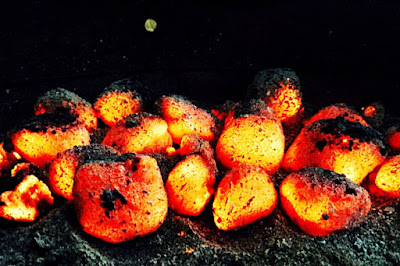A gaping trench in the sea floor in the Banda Sea in eastern Indonesia. The rips in the earth's crust was stretched down about 7.2 kilometers and with broad reaches 60 thousand square kilometers, or about the size of the region of Tasmania in Australia.
 |
| Geologists have found the largest exposed fault on the Earth laying under the Banda Sea. (Picture from: http://adf.ly/1glhLP) |
The geologists have recently discovered that the fault called Banda Detachment was one of the biggest faults on the Earth, that through the Ring of Fire or the area in the Pacific Ocean where the large numbers of earthquakes and volcanic eruptions occured.
 |
| This fault, the Banda Detachment, represents a rip in the ocean floor exposed over 60,000 square kilometres.. (Picture from: http://adf.ly/1glhQt) |
According to the US. Geological Survey (USGS) about 90 percent of earthquakes and 81 percent of the greatest earthquakes on Earth occur along the Ring of Fire. Even with 75 percent of volcanic eruptions.
As we all knew, the Pacific Ring of Fire stretches from New Zealand, passed through the top of the Australian continent, some parts of Indonesia, Japan, and then to the West Coast region of the United States before ending up at the bottom of South America.
A number of recent earthquake events has proved the vulnerability of the Ring of Fire. On November 22, 2016, there's an earthquake with 6.9 on the Richter scale rocked Fukushima Prefecture in Japan, then followed by a little tsunami. Meanwhile, on Wednesday, December 7, 2016 at 5:03 pm, an earthquake measuring 6.5 on the Richter scale was shook partially Aceh. More than 100 people died from it.
 |
| The Ring of Fire or the area in the Pacific Ocean where the large numbers of earthquakes and volcanic eruptions occured. (Picture from: http://adf.ly/1glhQt) |
And, the world has not yet forgotten an undersea earthquake measuring 9.1 on the Richter scale triggered a giant tsunami that hit a number of beaches in the Indian Ocean, including Aceh which killed more than 200 thousand people in 2004.
However, the most catastrophic earthquakes that occur along the Ring of Fire was happened on Sunday, May 22, 1960. At that time, an earthquake of 9.5 on the Richter scale shook Chile.
According to a senior lecturer of the Geotechnical and Earthquake Engineering at the University of Technology Sydney, Behzad Fetahi, that there's the limits of tectonic plates meet in the Ring of Fire. "They are engaged with each other and push each other, it is one of the most active area," he said, as quoted by News.com.au on Thursday, December 15, 2016.
A research on Banda Detachment conducted by a team of geologists from the Australian National University and Royal Holloway University of London. The team studied a map of the seabed in the Banda Sea in the Pacific Ocean before extrapolating with field activities in formulating their hypothesis.
 |
| The scientists have for the first time seen and documented the Banda Detachment fault in eastern Indonesia - and worked out how it formed. (Picture from: http://adf.ly/1glhQt) |
The faults in the Banda Sea is predicted to cause the earthquake and tsunami that is estimated to be catastrophic (not only because it is located in the Ring of Fire). Earthquakes that occur around the deep ravine that could make it shifted (slip), triggering more violent tremor on the surrounding islands.
An abrupt shift on the abyss that can release energy in the form of waves, and causing an earthquake more powerful. Over the decades, it has emerged a variety of questions about how the deep trench formed in the Banda Sea.
"The trench has been known to exist for 90 years, but until now no one could explain why was so deep," said Jonathan Pownall, lead researcher of the Australian National University.
The researchers identified that the deep trench in Banda Detachment was created by the subduction of the past (when a tectonic plate moves beneath another plate, is forced down, pushed through the crust into the mantle).
Dr. Pownall hope these findings will help the various parties to assess the potential danger of tsunami and earthquakes in the future.
"In the extreme tsunami risk areas, knowledge about the great fault such as Banda Detachment (has risk of causing a massive earthquake during a shift) is fundamental to be able to predict the tectonic disaster," he said.
The Australian National University report associated with these deep trench also said that there is no evidence that the recent quake occurred around Banda Detachment. However, the researchers can not yet confirm it. *** [EKA | FROM VARIOUS SOURCES | ANU | DAILYMAIL]
Note: This blog can be accessed via your smart phone
























